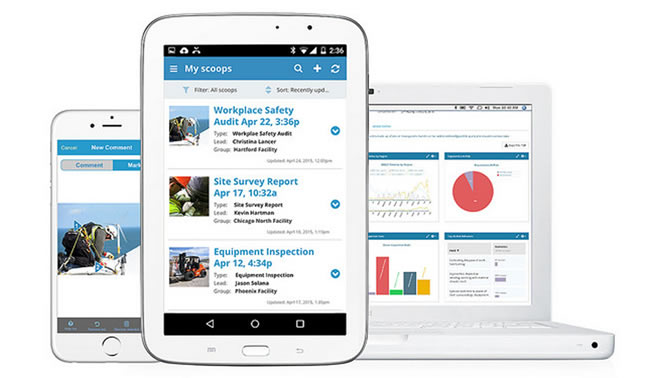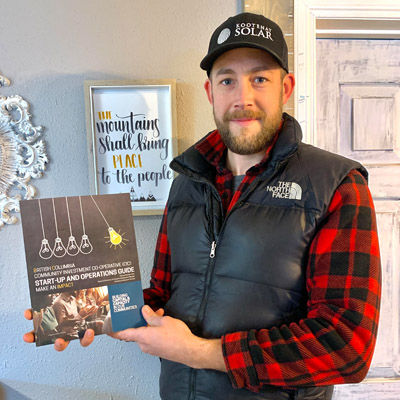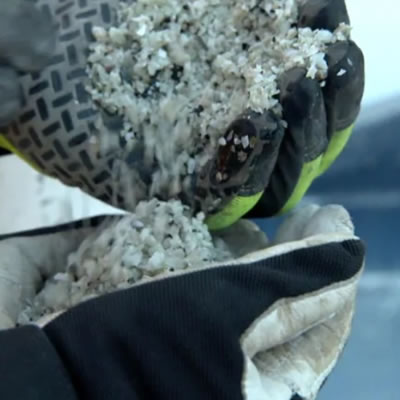Trusterra Technologies announces new mobile platform designed to document workplace hazards
ScoopMAE is fully customizable for the end user with a variety of apps and configured to run within the Scoop environment

ScoopMAE, an app created by Trusterra Technologies, is designed to be an always-accessible platform for workers to report workplace hazards and unsafe conditions. — Photo courtesy Trusterra Technologies
Trusterra Technologies has announced a new mobile awareness and engagement platform focused on ramping up job site safety through immediate communication between employees. The app, called ScoopMAE, arms all employees with an immediate, always-accessible platform in their pockets that can be used to document and report hazards or unsafe conditions on the job site.
“The ease of access and use helps ensure hazards don’t stay in the shadows until it’s too late,” said Babak Sardary, CEO of ScoopMAE.
Using Scoop, operations personnel are able to quickly and cost-effectively build, deploy and maintain their own mobile apps, choosing from a smorgasbord of customizable apps, each connected to a specific form or business process, such as a site report, inspection or audit. The apps are configured and run within the Scoop environment, ensuring strong security and flexible access control. Managers can easily run reports by cross-linking and analyzing data pulled from multiple sources.
“The manager would also set parameters on which workers have access to each app, and the apps can be customized with the appropriate metrics,” said Sardary.
When it comes to functionality, reporting hazards is, of course, just the initial step. “Once a given hazard is ‘scooped,’ the platform allows addition and assignment of corrective actions and tracking these by priority and status to resolution, which is where the real value is realized,” Sardary said.
The app also analyzes bodies of data and visualizes otherwise hidden patterns and trends using analytics.
In mining, for instance, a company could use ScoopMAE to collect hundreds of behavioural observations on its haul truck operations. “Taken individually, each observation is not terribly meaningful, but when viewed using an analytic dashboard, the pie chart may reveal the top at-risk behaviour to be 'drivers not doing a safety walk around the vehicle before leaving,' ” said Sardary, as an example. Field workers can comment on each behaviour, providing information safety managers can use to rectify or mitigate the problem.
For instance, safety managers may discover that drivers aren’t completing the safety walk around haul trucks because the access ladders are not ergonomically designed, meaning embarking and disembarking are difficult for drivers. “This knowledge can be hugely valuable in helping companies laser-focus resources and attention on high-priority safety issues,” said Sardary.
As a mobile platform, Scoop conquers the challenge of mining and energy operations scattered across multiple large sites. Built-in multimedia functioning helps relay technical issues requiring complex descriptions—users can simply attach a picture or video clip to the inspection form or use the touchscreen to mark up the picture with on-screen annotations.
With safety embedded in the DNA of most industrial operations, the field of mobile safety apps is vast. What makes ScoopMAE stand out is its focus on the entire business process, rather than single-purpose, form-based field data collection. “Having worked in the field for many years, we realized data collection was just the first step,” said Sardary. “To be effective, you really need an all-in-one, seamless platform that allows sharing of data, collaboration, problem solving and, ultimately, analysis and reporting.”
The consumer world provides mountains of data on the intuitive appeal of apps as an engaging platform, but work-based tools don’t always measure up, often being inefficient, siloed and riddled with excessive manual steps.
“With Scoop we wanted to bring ease of use, social collaboration and immediacy to the world of work,” said Sardary. “Now companies can turn any of their inspections, observations, audits or field reports into interactive mobile apps in minutes without coding."
Adopting new technology can be a hurdle, but ScoopMAE requires little more than a few hours of online instruction through examples, most of which is focused on administrators. “We have virtually never had to provide user training, which is a testament to the ease of use of the platform,” said Sardary.
Into the future, Trusterra Technologies is looking at developing additional features that will allow a more detailed and specific customization of each app to match internal processes.
“We are also working on integrations to connect Scoop data with other enterprise IT systems,” said Sardary. “Perhaps most exciting is the work we are doing with a number of partners and customers to expand the capabilities of Scoop to the world of machines,” he added. “Increasingly, as humans we work alongside machines and automation, but the links across these worlds are loose at best.”




